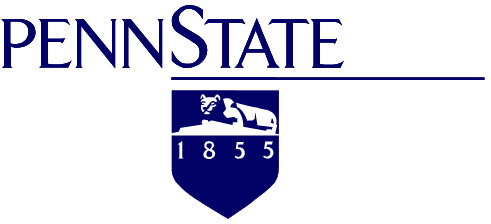Fall 2012 Abstracts
- Calder Daenzer, Pennsylvania State University
- T-duality for Langlands dual groups
- I will give a quick tour of T-duality, followed by a quick tour of Langlands duality. The first duality is a relation between a pair of principal torus bundles with NS-flux, while the second is the relation between a pair of Lie groups whose root and co-root data is interchanged. A priori, these two have nothing to do with one another, but I will describe how in many cases Langlands may be realized as a T-dualization. This is joint work with Erik Van Erp.
- Rui Loja Fernandes, Instituto Superior Técnico and University of Illinois at Urbana-Champaign
- Non-commutative integrable systems and Dirac-Poisson geometry
- In the same way that lagrangian fibrations are related to integrable systems, there is also a class of fibrations related with non-commutative integrable systems (which include the former as a special case). In this talk I will discuss the geometry underlying this class of fibrations, where Poisson/Dirac structures play a key role. Somewhat surprisingly, background 3-forms appear into the picture in a natural way. Joint work with Camile Laurent-Gengoux (Metz) and Pol Vanhaecke (Poitiers).
- Eugene Lerman, University of Illinois at Urbana-Champaign
- Symplectic toric manifolds and principal torus bundles
- Compact connected symplectic toric manifolds were classified by Delzant more than 20 years ago. I will describe a classification of the non-compact ones. In particular I will try to explain why the category of symplectic toric manifolds "is" the category of principal torus bundles with connections and a "magnetic" term.
- Yanli Song, Pennsylvania State University
- Proper maps, bordism, and geometric quantization
- This talk is motivated by the $[Q,R]=0$ conjecture in the noncompact setting. Let $G$ be a compact connected Lie group acting on a stable complex manifold $M$ and an equivariant vector bundle $E$ over it. Besides, suppose $f$ is an equivariant map from $M$ to the Lie algebra. We can define some equivalence relation on the triples $(M,E,f)$ such that the set of equivalence classes forms an abelian group. We will show that this group is isomorphic to a completion of the character ring $R(G)$.
- Shilin Yu, Pennsylvania State University
- Formal neighborhood of a diagonal embedding
- A classical theorem in differential topology says that any submanifold of a smooth manifold admits a tubular neighborhood which is diffeomorphic to the total space of its normal bundle. In the complex analytic world, the tubular neighborhood theorem fails to be true if the word 'diffeomorphism' is substituted by 'biholomorphism'. An alternative question one could consider is to compare the infinitesimal neighborhood of a complex submanifold with that of the zero section within its normal bundle. I will discuss the special yet important case of the diagonal embedding of a Kahler manifold $X$ into $X\times X$. It was shown by Kapranov that the Atiyah class plays an essential role in the story. I will provide a different proof of his theorem and mention briefly how to generalize it.

